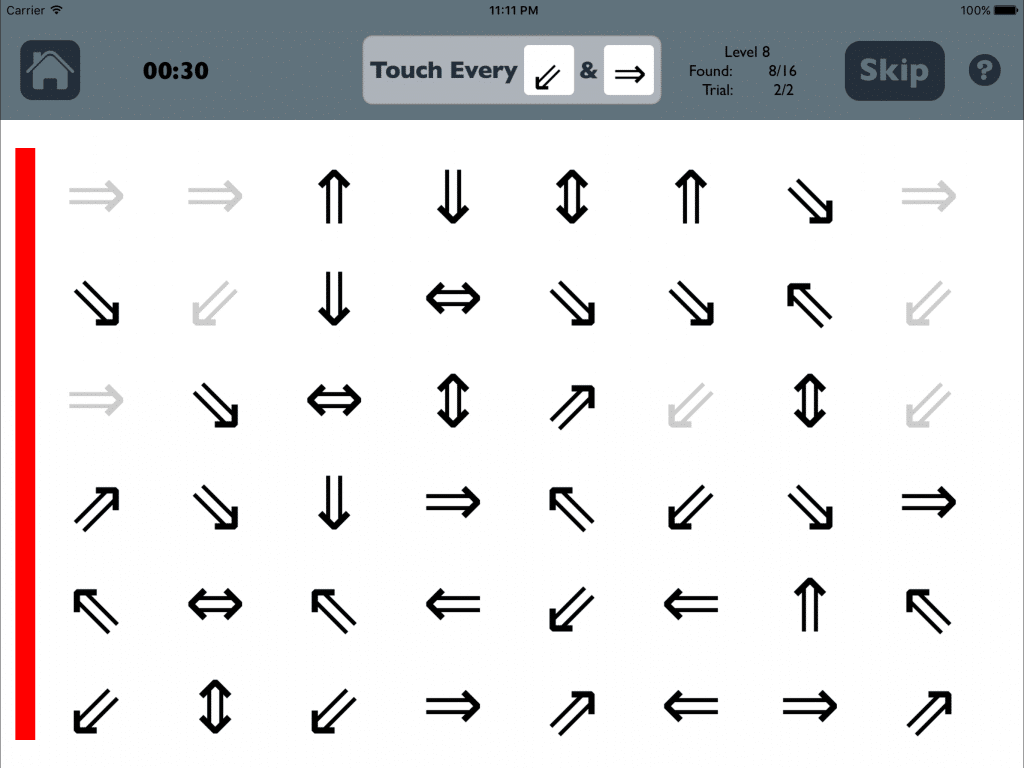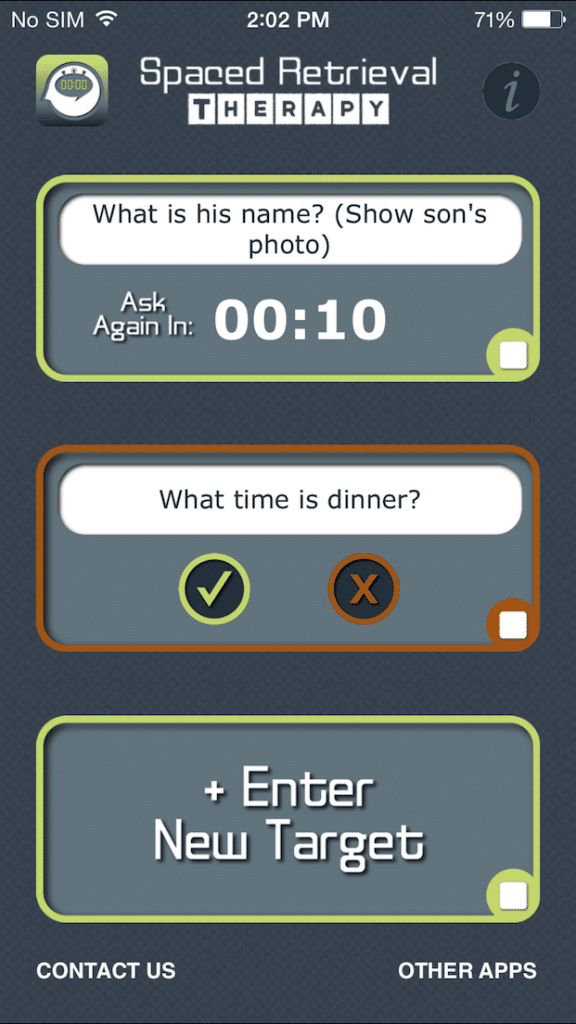Using Speech Therapy Apps to Treat Cognitive-Communication Disorders
5 min read
In order to communicate a thought, first we think of an idea, then choose the words to express it, and finally we voice it. However, that first step requires our cognitive abilities, and it is often overlooked in favor of a focus on language and speech.
Just as we cannot articulate words without our tongues, we cannot engage in the full range of communicative acts without cognition. Without memory, we cannot remember what we’ve already said or heard. Without attention, we can’t tune out distracting noises or focus on the conversation. Without executive functioning, we wouldn’t use communication to achieve a goal. Each cognitive process plays a vital role in our communication, so when they become impaired, a cognitive-communication disorder often results.
Learn more about cognitive communication in our informative “What Is a Cognitive-Communication Disorder?” guide offering tests, treatments, and tips.
The SLP Role in Cognitive-Communication Disorders
The speech-language pathologist’s job is to assess all aspects of a client’s communication: speech, language, and cognition. Clients who have recently suffered a stroke or brain injury, as well as those with progressive conditions like dementia, Parkinson’s, or MS, may show signs of a cognitive-communication disorder.
If treatment is indicated, the clinician and client will set goals to improve communication functions so the client can better participate in their life. The treatment may either address the impairment directly, or focus on compensatory strategies, or a combination of the two. The treatment plan for cognitive-communication disorders may include a variety of activities, including the use of apps for therapy.
Integrating Apps into Cognitive-Communication Therapy
Apps can make it easier to provide quality exercises for a wide range of goals, and they’re easily accessible to the clinician and the client. However, it’s important to recognize that performing an exercise on an app may not be enough to improve a skill or deficit.
The exercise presented by the app is the stimulus; the therapy is how we help a person deal with that stimulus. Successful therapy may involve:
- bringing greater awareness to the problem and what is needed to solve it
- teaching strategies that are used to break the problems down into manageable chunks
- providing repeated exposure and opportunities to be successful, cementing the skill in the brain.
A skilled therapist can use the stimuli presented through apps to achieve these goals.
Apps to Help with Cognitive-Communication Disorders
Tactus Therapy offers a variety of apps that can be used to treat cognitive-communication disorders as part of a skilled therapy plan.
Conversation Therapy
Conversation Therapy presents hundreds of interesting topics, each with 10 different questions. Because the app gets people talking, it can be used to work on many communication skills. In general, turn-taking, eye contact, and topic maintenance can be addressed as the client answers the questions. As both the client and clinician can participate in the conversation, listening skills are put to work, along with self-monitoring for speech intelligibility.
Use the Feel questions to target pragmatic (social language) skills such as empathy. The Remember questions are useful for targeting memory or reminiscence, whereas the Brainstorm questions target flexible thought. Those working on organization can practice by answering the Define and Narrate questions. Target reasoning and problem solving by asking the Decide, Infer, Predict, or Evaluate questions, or by selecting only the Safety and Problems category of topics.
Conversation Therapy
Engage in real-life discussions with pictures & questions that get people talking to practice communication strategies.
Advanced Naming Therapy
Advanced Naming Therapy is ideal for cognitive-communication therapy, with hundreds of stimuli to elicit higher-level expression. The Describe activity has many categories filled with interesting pictures to discuss. Use the Thoughts and Conversations categories to build perspective-taking skills. Target flexible thinking using the Idioms category. Address problem-identification and solving with the pictures found in the Problems category.
The Generate activity can be used to improve speed of processing by having clients race against the clock to name items from a given category. Target semantic organization by introducing strategies that the client can use for a more efficient search (e.g. visualizing, subcategorizing, searching through the alphabet, moving across a mental map).
Practice organizing thoughts into clear, concise arguments with the Compare activity. Comparing and contrasting requires the client to define each word or describe each picture in a way that points out both the unique qualities of each, and the commonality between them. The exercises in the Abstract Concepts category are especially challenging, requiring deeper analysis and more nuanced responses.
Advanced Naming Therapy
Express yourself better with challenging word-finding exercises for aphasia and cognitive-communication problems.
Category Therapy
If Advanced Naming Therapy is too challenging when working on thought organization, step down to Category Therapy. Work on exclusion, addition, and sorting tasks for concrete, abstract, and sub categories.
While the app only requires users to identify the correct answer, the therapist can ask the client explain their choices and discuss why the other options aren’t appropriate. (Be sure to turn off Auto-Advance in the Settings.)
Category Therapy
Strengthen connections between words with flexible exercises to improve language and reasoning skills.
Visual Attention Therapy
For clients with hemispatial neglect, Visual Attention Therapy provides visual scanning exercises to improve attention. This can help with reading comprehension, since those with neglect may start reading midway through a line. The advantage of using the app for scanning practice is the immediate auditory and visual feedback it provides to the client, along with the automatic scoring and timing it offers the clinician.
This app can also be useful for clients with memory or other attention deficits. Scanning the screen for two closely related targets is a great exercise for working memory and attention to detail. Encourage increased speed of processing by drawing attention to the timer. Many clients have a goal to decrease their impulsivity, and this app makes it easy to measure progress by focusing on minimizing the error rate over repeated trials.
Visual Attention Therapy
Retrain the brain with interactive cancellation exercises that help you assess and treat left neglect.
Spaced Retrieval Therapy
This app simplifies the evidence-based memory training technique of spaced retrieval. Track data and time intervals for personalized memory targets to help clients with dementia or TBI.
Spaced Retrieval Therapy
Make memory training easy using evidence-based expanding intervals with built-in data tracking & timing.
The most effective cognitive-communication therapy requires more than sitting a person alone in front of a screen. Tactus Therapy apps are designed to work best when used together with a therapist or trained caregiver who can integrate personalized strategies, give feedback to improve, and target individualized goals.















